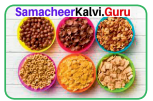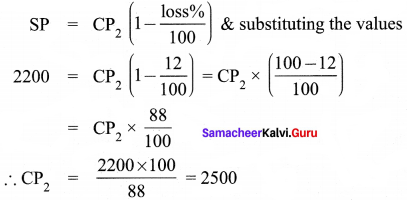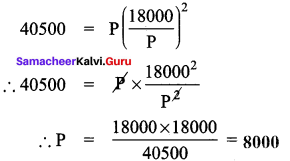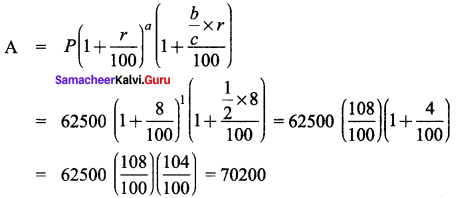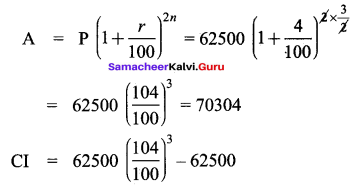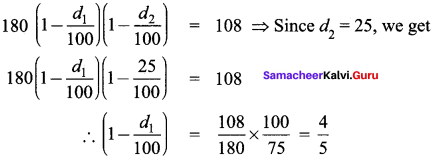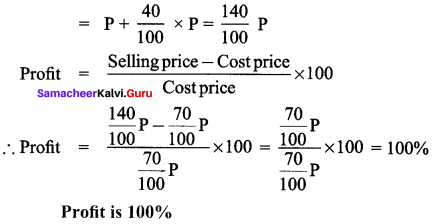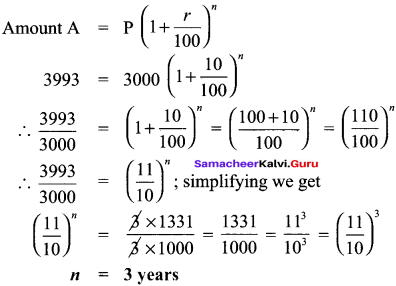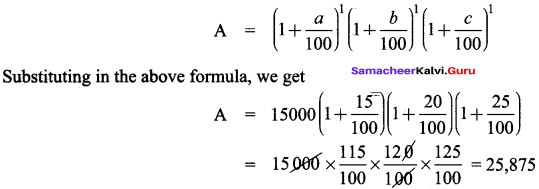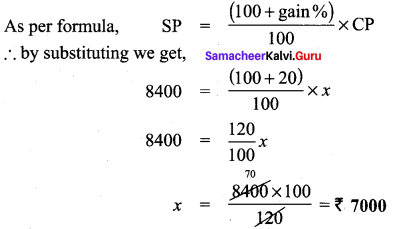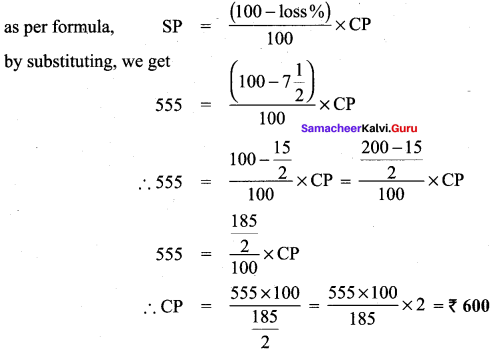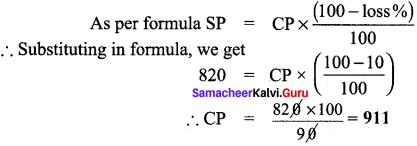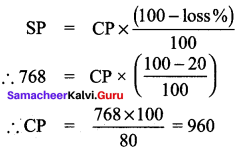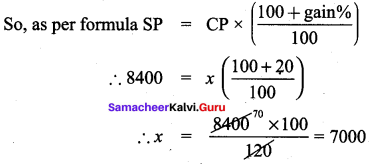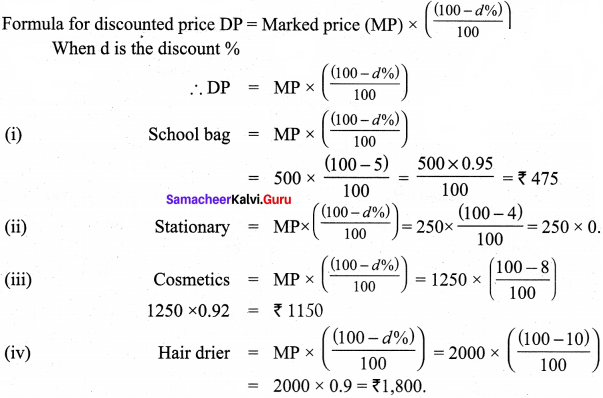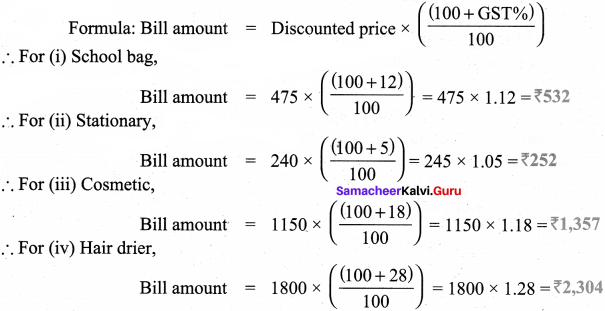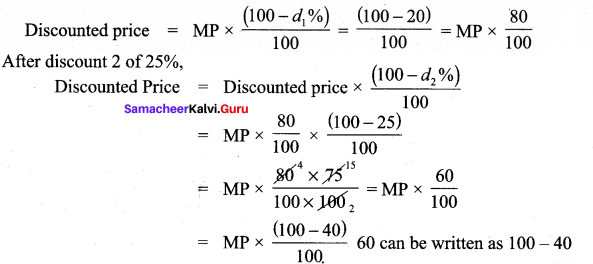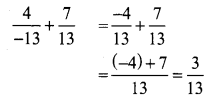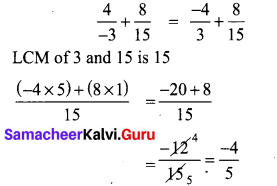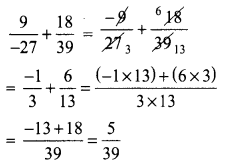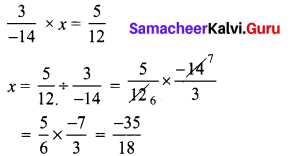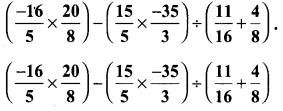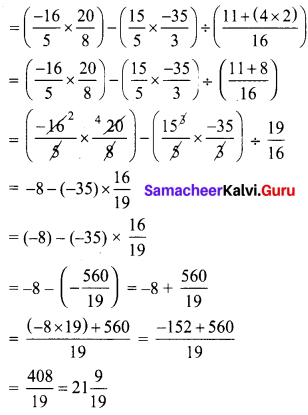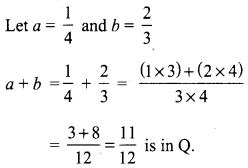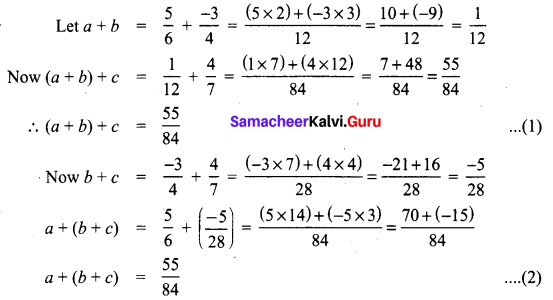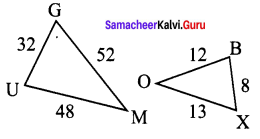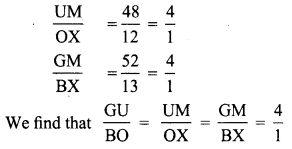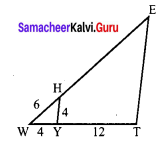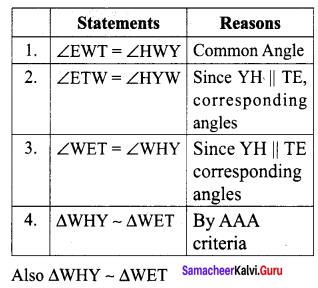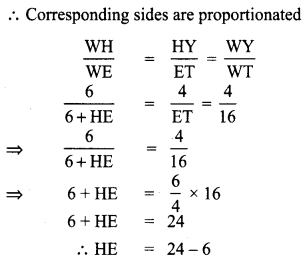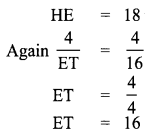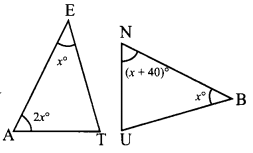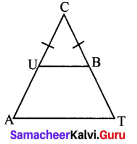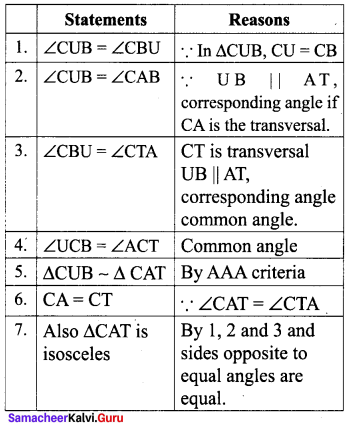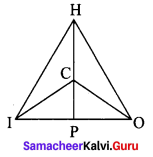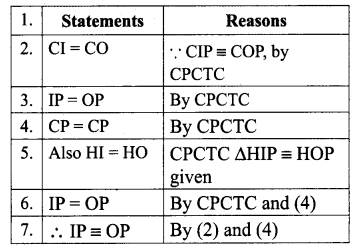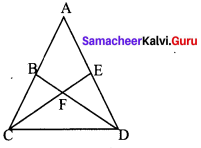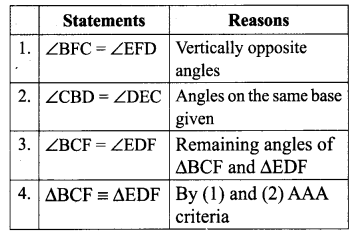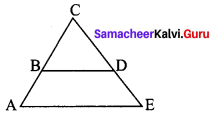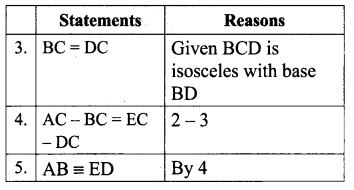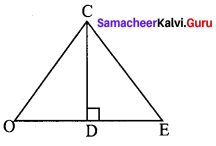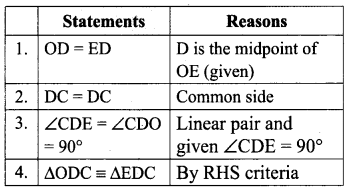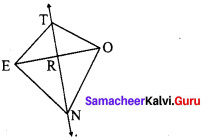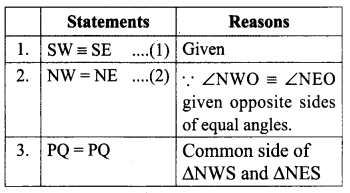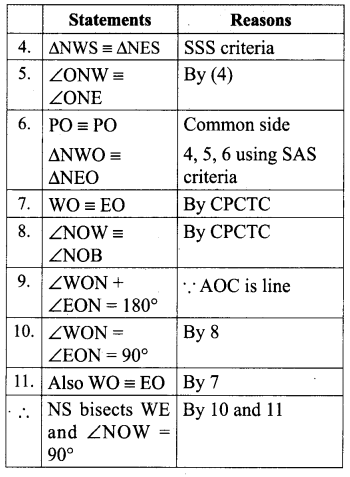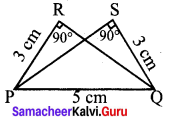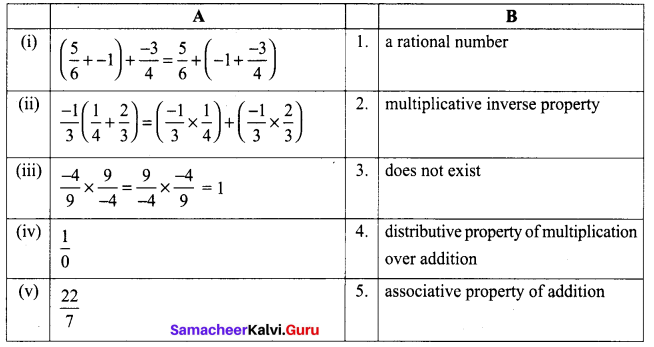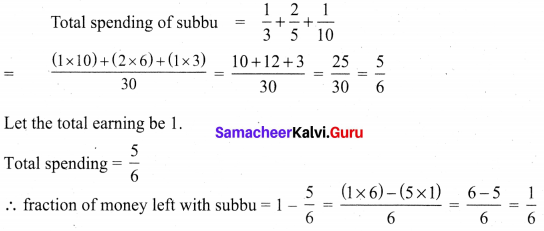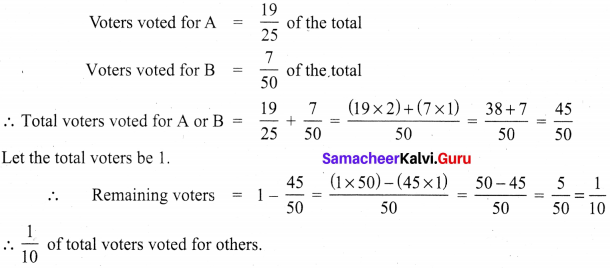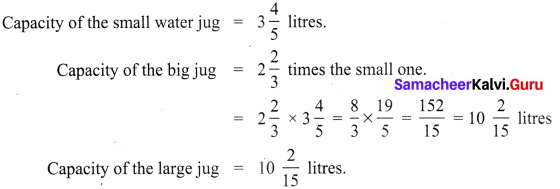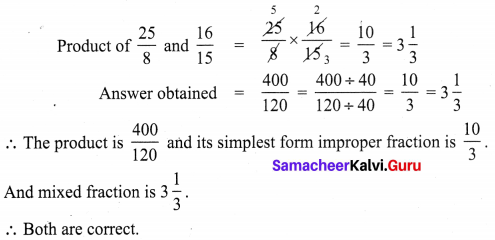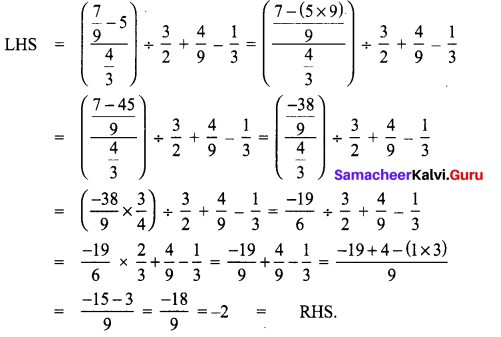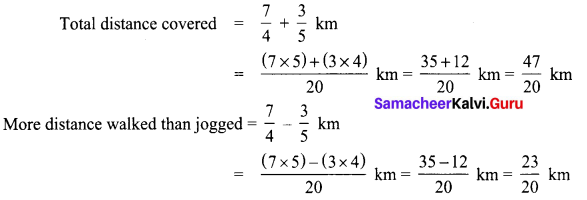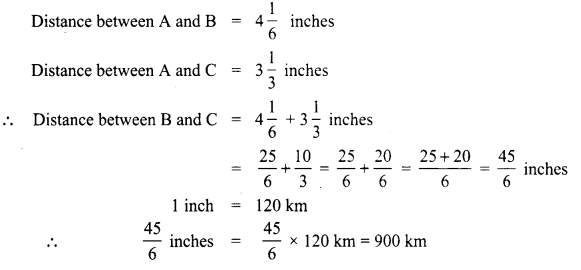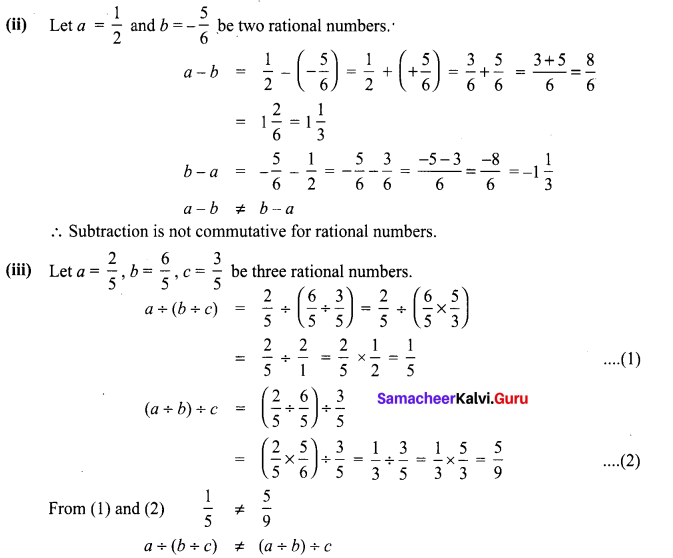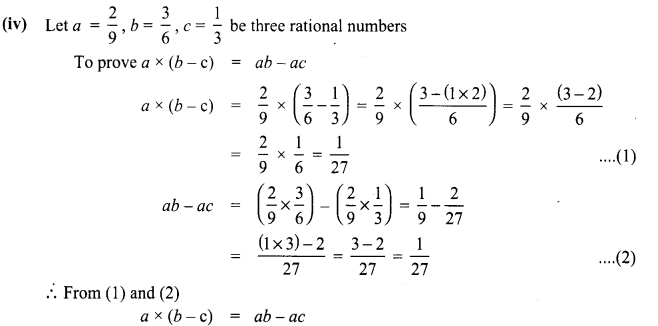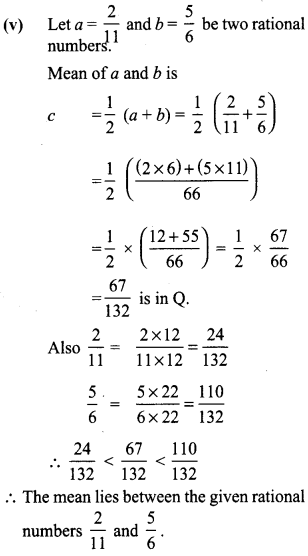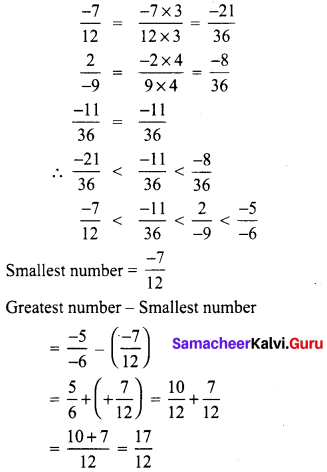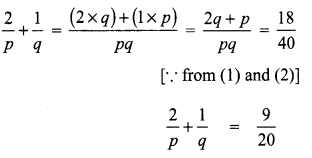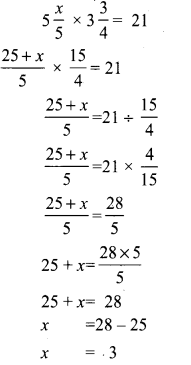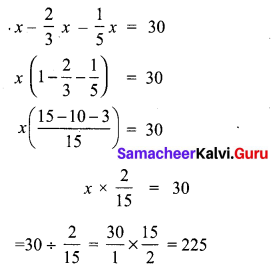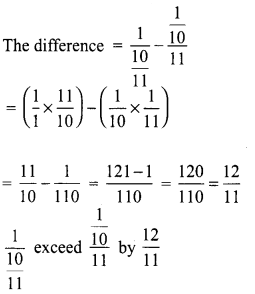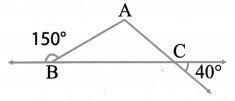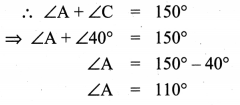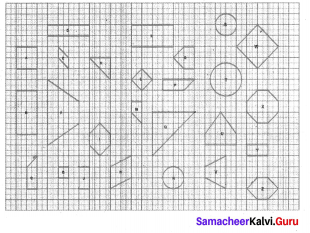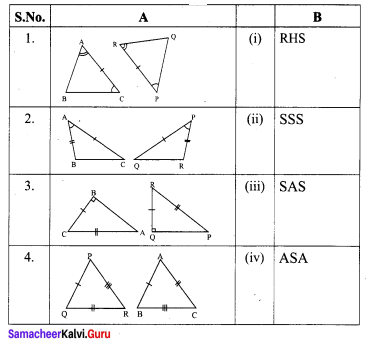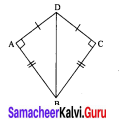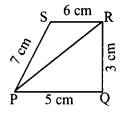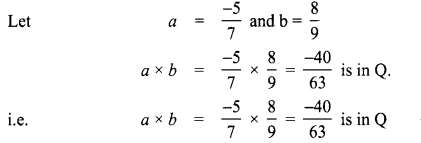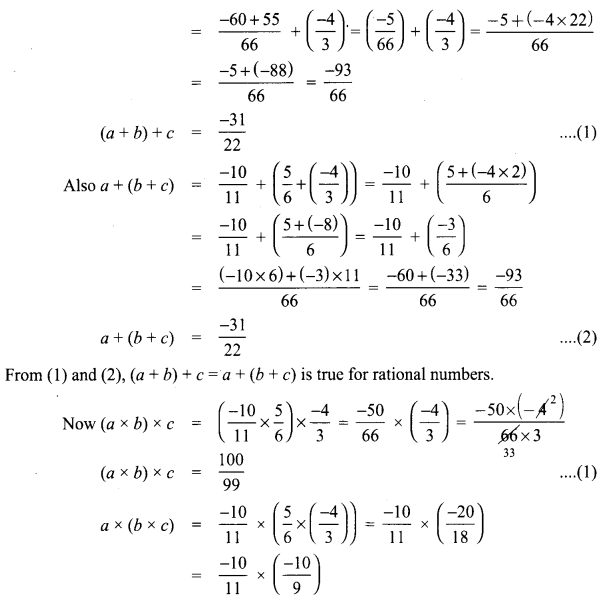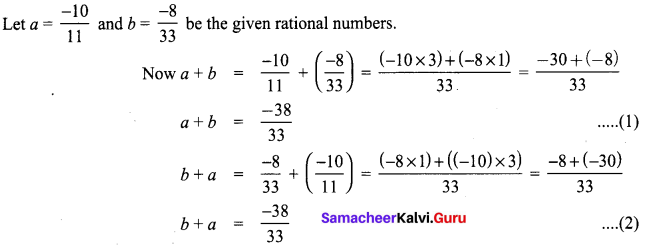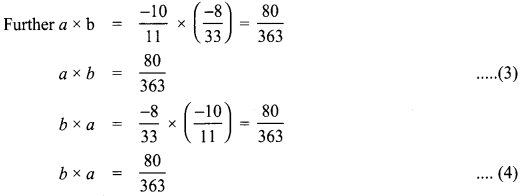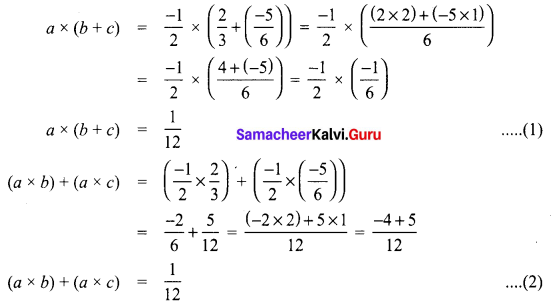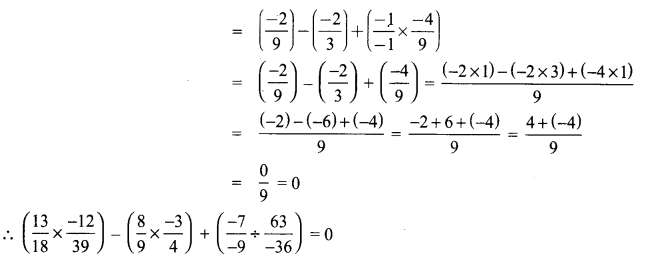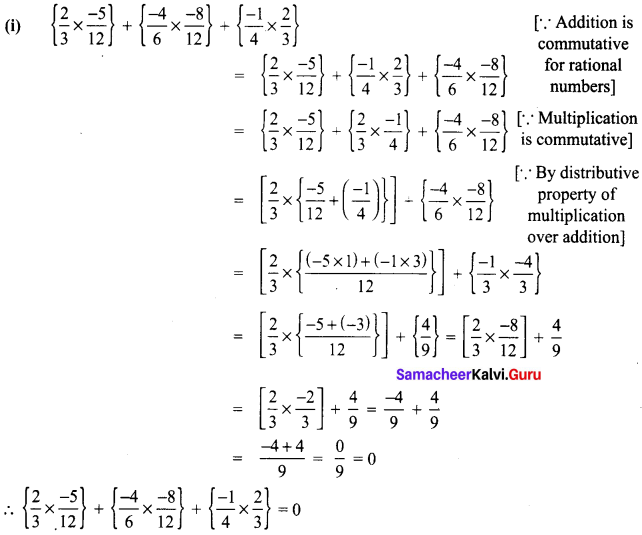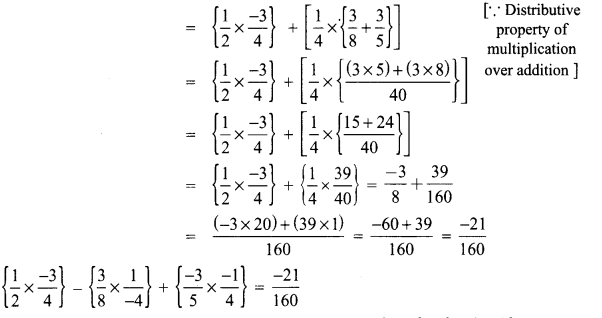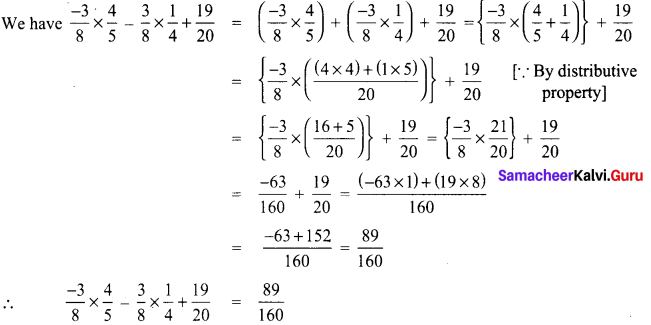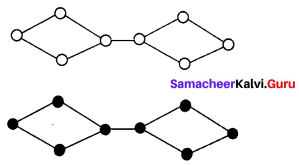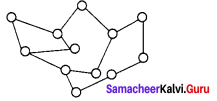Students can Download Maths Chapter 1 Life Mathematics Additional Questions and Answers, Notes Pdf, Samacheer Kalvi 8th Maths Book Solutions Guide Pdf helps you to revise the complete Tamilnadu State Board New Syllabus and score more marks in your examinations.
Samacheer Kalvi 8th Maths Solutions Term 2 Chapter 1 Life Mathematics Additional Questions
Additional Questions and Answers
Question 1.
Fill in the blanks
Question (a)
Percent means ……….
Answer:
Per hundred or out of hundred.
Question (b)
Percent is useful in ………
Answer:
Comparing quantities easily
![]()
Question (c)
The formula to find the increased quantity ………
Answer:
I = (1 + \(\frac{x}{100}\))
Question (d)
The formula to find the decreased quantity ………
Answer:
D = (1 + \(\frac{x}{100}\))
Question (e)
Gain or profit % ……..
Answer:
(\(\frac{Profit}{C.P}\) x 100)%
Question (f)
Loss % = ………..
Answer:
(\(\frac{Loss}{C.P}\) x 100)%
Question (g)
S.P = ………. (if gain % is given)
Answer:
![]()
Question (h)
C.P = ……… (if gain % is given)
Answer:
![]()
Question (f)
S.P = ………. (if loss % is given)
Answer:

Question (h)
C.P = ………. (if loss % is given)
Answer:
![]()
Question (k)
Selling price = Marked price – …………
Answer:
Discount
![]()
Question (l)
Cost price = Cost price + ……….
Answer:
Over head expenses
Question 2.
If y% of ₹ 1000 is 600, find the value ofy.
Solution:
y% of 1000 = 600
\(\frac{y}{100}\) x 1000 = 600
y = \(\frac{600}{10}\)
y = 60
Question 3.
A number when decreased by 10% becomes 900. Then find the number.
Solution:
Let the number be ‘x’
Given x – \(\frac{10}{100}\)x = 900
\(\frac{100x-10x}{100}\) = 900
\(\frac{90x}{100}\) = 900
x = \(\frac{900×100}{90}\) = 1000
Question 4.
If the population in a city has increased from 5,00,000 to 7,00,000 in a year, find the percentage increase in population.
Solution:
Increase in population = 7,00,000 – 5,00,000 = 2,00,000
Percentage increase in population = \(\frac{2,00,000}{5,00,000}\) x 100 = 40%
![]()
Question 5.
If the selling price of a refrigerator is equal to \(\frac{10}{8}\) of its cost price, then find the gain/ profit percent.
Solution:
Let the C.P of the refrigerator be x
S.P = \(\frac{10}{8}\)x
Profit = S.P – C.P = \(\frac{10}{8}\)x – x = \(\frac{10x-8x}{8}\) = \(\frac{2x}{8}\)

Question 6.
Karnan bought a dishwasher for ₹ 32,300 and paid ₹ 2700 for its transportation. Then he sold it for X 38,500. Find his gain or loss percent.
Solution:
Total C.P of the dishwasher = C.P + Overhead expenses.
= ₹ 32300 + ₹ 2700 = ₹ 35000
S.P = ₹ 38500
Therefore, we find S.P > C.P

Question 7.
The value of a car 2 years ago was ₹ 1,40,000. It depreciates at the rate of 4% p.a. Find its present value.
Solution:
Depreciated value = P(1 + \(\frac{r}{100}\))n = 1,40,000(1 – \(\frac{4}{100}\))2
= 1,40,000(\(\frac{96}{100}\)) x (\(\frac{96}{100}\)) = ₹ 1,29,024
![]()
Question 8.
Find the difference in C.I and S.I for P = ₹ 10,000, r = 4% p.a, n = 2 years.
Solution:
C.I – S.I = P(\(\frac{r}{100}\))2 = 10,000(\(\frac{4}{100}\))2
= 10,000 x \(\frac{4}{100}\) x \(\frac{4}{100}\) = ₹ 16
Question 9.
Find the C.I for the given Principal = ₹ 8,000, r = 5% p.a, n = 2 years
Amount A = P(1 + \(\frac{r}{100}\))n = 8000(1 + \(\frac{5}{100}\))2
= 8000 x \(\frac{105}{100}\) x \(\frac{105}{100}\)
= 8000 x \(\frac{21}{20}\) x \(\frac{21}{20}\)
A = ₹ 8820
Cl = A – P = 8820 – 8000 = 820
Question 10.
Find the S.I for the principal P = ₹ 16,000, r = 5% p.a, n = 3 years
Solution:
P = ₹ 16,000, n= 3 years, r = 5%
S.I = \(\frac{Pnr}{100}\) = \(\frac{16000x3x5}{100}\) = ₹ 2400


